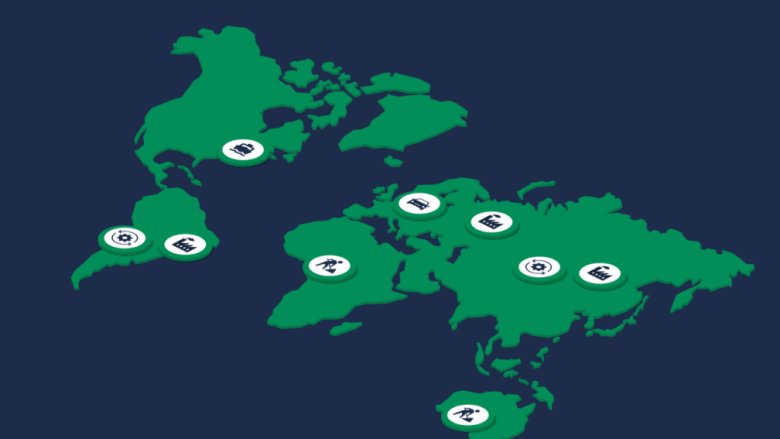Through guidance, analytics, and capacity building, the initiative aims to set a solid foundation to improve policy frameworks, analyze mineral resources and processing activities, explore decarbonization opportunities, identify challenges, and facilitate informed decision-making for sustainable mining development. Check out the summary of our projects below:
Climate-Smart Mining Initiative
Projects
Net Zero Roadmap for Copper and Nickel Value Chains
The Net Zero Roadmap for Copper and Nickel Value Chains is a net zero transition guide that sets out a science-based decarbonization strategy for copper and nickel mining value chain actors.
Building Climate Resilience in the Mining Sector
This note offers guidance to mining companies on strengthening climate resilience both inside and outside the mine fence, guided by the best available scientific literature and tools. It features lessons and examples of real-world experiences from mining companies, as well as resources for further information. The note starts with a comprehensive overview of the type of climate risks mining companies face, underscoring the importance of engaging with local stakeholders to co-develop adaptation responses.
Climate Mineral Explorer (CME)
The CME maps mineral supply chains from extraction to end-use of low-carbon technologies, identify where greenhouse gas (GHG) emissions are located within each step of the supply chain. It provides key information to enable users to make decisions regarding how these emissions could be minimized while ensuring a steady supply of critical minerals globally.
Forest-smart mining (FSM) is mining that acknowledges and understands the relationship between forests and other land uses such as socio-economic uses and ecosystem services, and actively seeks to reduce loss or damage to those uses, and in some cases, promote a net gain for them. The CSM Forest-Smart Mining toolkit consists of two reports: Developing Forest-Smart Artisanal and Small-Scale Mining (ASM) Standards and Forest-Smart Mining: Identifying Factors Associated with the Impacts of Large-Scale Mining on Forests. Both reports look at ways to effectively use Forest Carbon mechanisms to minimize the forest footprint of the mining sector and maximize their contribution to forest conservation and reforestation.
The Business Case for Gender-Responsive Climate-Smart Mining
In order for mining to shift toward being climate-smart and equitable, it is important to consider gender-responsiveness and to reduce gaps every step of the way. The Business Case for Gender-Responsive Climate-Smart Mining seeks to create a more equitable climate-smart mining sector through awareness of the business case, collaboration and partnerships.
Circular Business Model for Vanadium Use in Energy Storage
This report examines the potential of circular business models for vanadium, focusing on the leasing model for Vanadium Redox Flow Batteries (VRFB). By exploring how such innovative business models, particularly leasing, can mitigate the barrier of high upfront costs, the report shows pathways toward the wider acceptance and deployment of VRFBs. The leasing model is presented as one of several feasible strategies to facilitate the deployment of VRFBs in the energy storage market.
Minerals for Climate Action: The Mineral Intensity of the Clean Energy Transition
In 2017, the World Bank published the report "The Growing Role of Minerals and Metals for a Low Carbon Future," which concluded that a low-carbon future will not be possible without minerals. The 2020 flagship report builds on this work by analyzing the impact of technology improvements and recycling on mineral demand up to 2050, comparing the global warming potential of different low-carbon technologies with fossil-fuel-based energy systems, and presenting a new framework to assess the risks associated with the demand for specific critical minerals.
Sufficiency, Sustainability, and Circularity of Critical Materials for Clean Hydrogen
This joint report from the World Bank and the Hydrogen Council uses new data to estimate the amount and overall footprint of critical minerals needed to scale up clean hydrogen.
Competitiveness of Global Aluminum Supply Chains Under Carbon Pricing Scenarios for Solar PV
An analytical piece on the opportunities for decarbonizing aluminum for solar PV, consisting of a main report on global aluminum supply chains, and two case studies on bauxite mining and refining in Brazil and Guinea. The report provides decision-makers with data and analysis to understand the different options available for countries to reduce their climate impact while maximizing value-added opportunities of green aluminum production.
Reuse and Recycling: Environmental Sustainability of Lithium-Ion Battery Energy Storage Systems
This report was published in partnership with the Energy Storage Partnership (ESP) to give a summary of the current situation of lithium-ion (Li-ion) battery reuse and recycling, in order to evaluate whether and how developing countries can and should participate more in this expanding sector.



